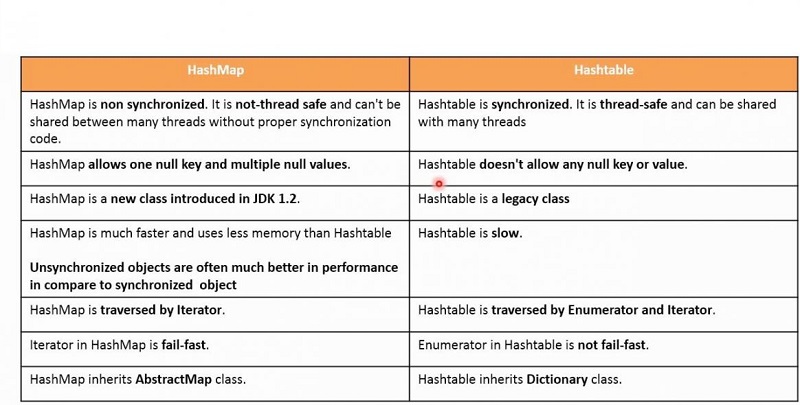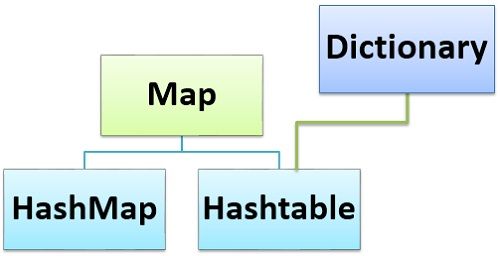
Difference between HashTabel and HashMap in Java
2007, Oct 26
HashTable is thread-synchronized and thread-safe. HashMap is not thread-synchronized, so it is not thread-safe. So in the multi-threaded case to manually synchronize the HashMap the difference is the same as Vector and ArrayList.
Difference between HashTabel and HashMap in Java
- HashTable is thread-synchronized and thread-safe. HashMap is not thread-synchronized, so it is not thread-safe. So in the multi-threaded case to manually synchronize the HashMap the difference is the same as Vector and ArrayList.
- HashTable does not allow null values (both key and value are not allowed), HashMap allows null values (both key and value can be).
- HashTable has a contains (Object value) function, the same as the containsValue (Object value) function.
- HashTable uses Enumeration, HashMap uses Iterator.

The above are just the differences in the surface, and their implementation is also very different.
- The default size of the hash array in HashTable is 11, and the added method is old*2+1. The default size of the hash array in HashMap is 16, and must be an exponent of 2.
- The use of hash values is different, HashTable directly uses the object’s hashCode, the code is like this:
int hash = key.hashCode();
int index = (hash & 0x7FFFFFFF) % tab.length;
而HashMap重新计算hash值,而且用与代替求模:
int hash = hash(k);
int i = indexFor(hash, table.length);
static int hash(Object x) {
int h = x.hashCode();
h += ~(h << 9);
h ^= (h >>> 14);
h += (h << 4);
h ^= (h >>> 10);
return h;
}
static int indexFor(int h, int length) {
return h & (length-1);
}